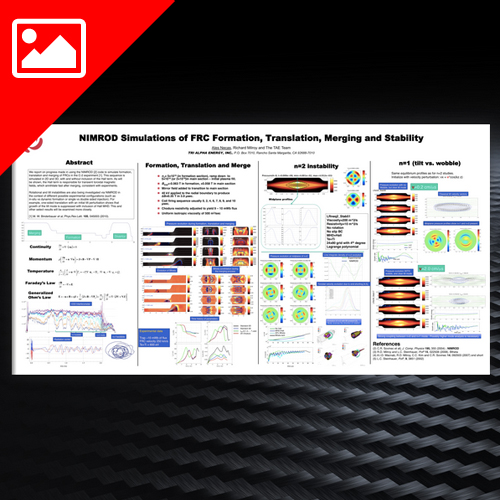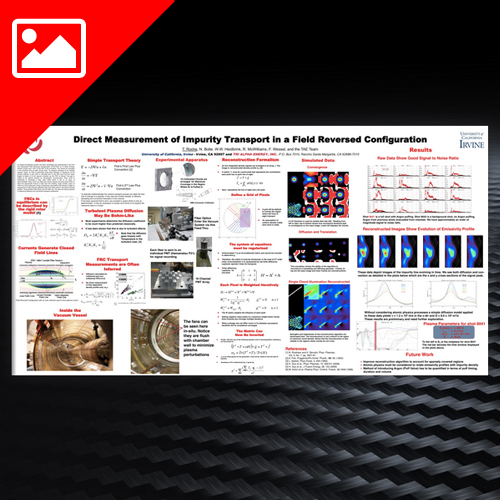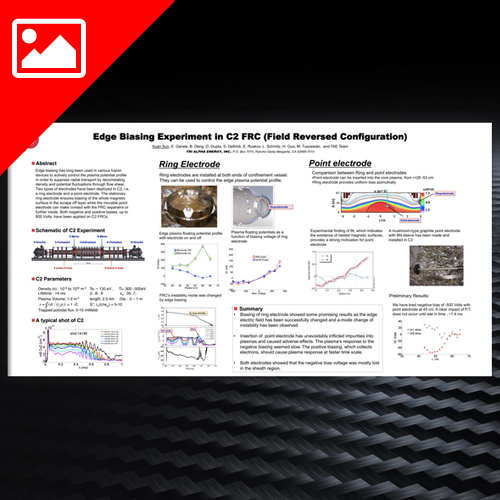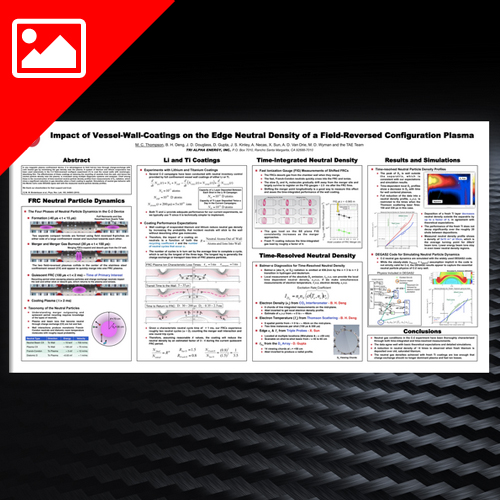
Nov 2011 | Posters, Formation, Fusion Energy, Fusion Research, Fusion Science, Fusion Technology, Plasma Research, Research Library, Simulation
November 2011 | A. Necas | APS-DPP | Poster
We report on progress made in using the NIMROD [2] code to simulate formation, translation and merging of FRCs in the C-2 experiment [1]. This sequence is simulated in 2D and 3D, with and without inclusion of the Hall term.

Nov 2011 | Posters, Experiment, Fusion Energy, Fusion Research, Fusion Science, Fusion Technology, Impurities, Plasma Research, Research Library
November 2011 | T. Roche | APS-DPP | Poster
An optical tomography system has been developed and implemented in the Flux Coil Generated Field Reversed Configuration (FCG-FRC) at TAE Technologies.

Nov 2011 | Posters, Experiment, Fusion Energy, Fusion Research, Fusion Science, Fusion Technology, Plasma Research, Research Library, Turbulence
November 2011 | E. Ruskov | APS-DPP | Poster
High required time resolution resolves in high required modulation frequency and high IF: need very fast data acquisition.

Nov 2011 | Posters, Edge Control, Experiment, Fusion Energy, Fusion Research, Fusion Science, Fusion Technology, Plasma Research, Research Library
November 2011 | X. Sun | APS-DPP | Poster
Edge biasing has long been used in various fusion devices to actively control the plasma potential profile in order to suppress radial transport by decorrelating density and potential fluctuations through flow shear.

Nov 2011 | Posters, Edge Control, Experiment, Fusion Energy, Fusion Research, Fusion Science, Fusion Technology, Plasma Research, Research Library
November 2011 | M. Thompson | APS-DPP | Poster
In any magnetic plasma confinement device, it is advantageous to limit hot-ion loss through charge-exchange with cold neutral gas by minimizing the gas density near the plasma.

Nov 2011 | Posters, Experiment, Formation, Fusion Energy, Fusion Research, Fusion Science, Fusion Technology, Plasma Research, Research Library
November 2011 | E. Trask | APS-DPP | Poster
The TAE Technologies C-2 experimental system[1] is a linear device consisting of two separate multi-coil theta-pinch formation sections and a central confinement vessel.





